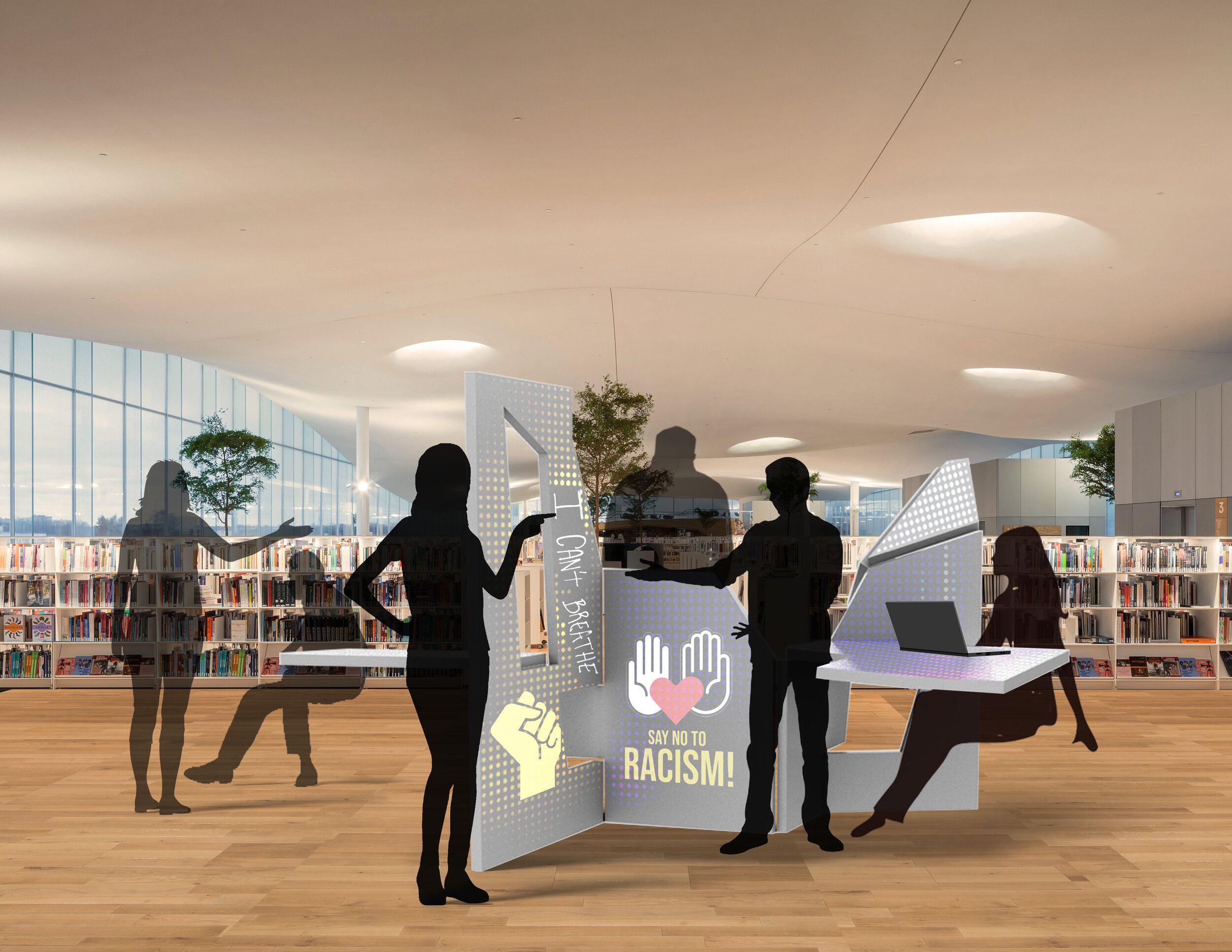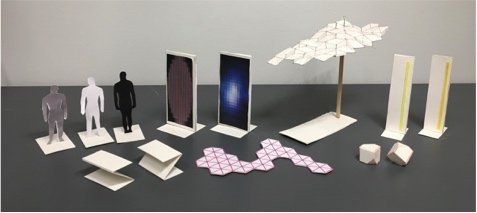Investigators:
Carlos Aguiar (PI)
Art and Design - ID | Information Science - Informatics | University of Illinois Urbana-Champaign
Collaborators: Keith Green
Human Centered Design | Cornell
Trevor Pinch
Science and Technology Studies | Cornell
Gilly Leshed
Information Science - Cornell
Advisors:
Gretchen Rymarchyk
Rural Schools Association of NYS
Teresa Vadakin
Tompkins County Public Library
Ben Sandberg
History Center in Tompkins County
Julia Taylor
History Center in Tompkins County
Elizabeth Rechtin
Dryden Central School District
Paul Fleming
Center for Humanities, Cornell
Partners:
• History Center in Tompkins County (NYS)
• Tompkins County Public Library (NYS)
• Dryden Central School District (NYS)
• Rural Schools Association of NYS
• Society for the Humanities
Publications:
[9] Carlos de Aguiar, Gilly Leshed, Trevor Pinch, Keith Green. (2022) ‘Evaluation of communIT, a Large-scale, Cyber-physical Artifact Supporting Diverse Subgroups Building Community’. 1 Jan. 2022 : 1 – 14.
[8] Carlos de Aguiar, Keith Green, Trevor Pinch, Gilly Leshed, Kevin Guo, and Yeolim Jo. (2021). Designing and Building communIT. In Media Architecture Biennale 20 (MAB20). Association for Computing Machinery, New York, NY, USA, 1–11. https://doi.org/10.1145/3469410.3469411
[7] Carlos de Aguiar, Keith Green. (2020). CommunIT Building. In: McCrickard, D.S., Jones, M., Stelter, T.L. (eds) HCI Outdoors: Theory, Design, Methods and Applications. Human–Computer Interaction Series. Springer, Cham. https://doi.org/10.1007/978-3-030-45289-6_12
[6] Carlos de Aguiar, Gilly Leshed, Trevor Pinch, Keith Green, Alex Bernard, John McKenzie, Camille Andrews. (2018). CoDAS, a Method for Envisioning Larger-Scaled Computational Artifacts Connecting Communities. IEEE Universal Village, Boston USA.
[5] Alex Bernard, Carlos de Aguiar, Keith Green (2018). Model for a Rigid, 3D Mechanism Inspired by Pop-Up Origami, and its Application to a Re-configurable, Physical Environment. IEEE CASE, at Munich, Germany.
[4] Carlos de Aguiar (2018). transFORM—A Cyber-Physical Artefact Augmenting Social Interaction in Residual Public Spaces. TEI 2019 Proceedings, Graduate Student Consortium, at Temper, USA.
[3] Carlos de Aguiar, Keith Green. (2018). transFORM - A Cyber-Physical Environment Increasing Social Interaction and Place Attachment in Underused, Public Spaces. DIS 2018 PWiP, at Hong Kong, China.
[2] Carlos de Aguiar, Alex Bernard, Keith Green (2018). EnAct – A Cyber-Physical Environment Increasing Social Interaction and Place Attachment in Underused Outdoor Spaces. CHI 2018, HCI Outdoors Workshop, at Montreal, Canada.
[1] Carlos de Aguiar (2016). EnAct. A Responsive, Cyber-physical Architecture as Social Activator of Informal Gathering Spaces in the City. archi-Doct Journal, Transformable Architecture, 7th edition.
communIT
A Large-Scale, Cyber-physical Artifact Supporting Diverse Subgroups Building Community
Smart and Connected Cities / Responsive Environments / Community Engagement / Under-serviced Populations
Many subgroups in the US remain marginalized from, misunderstood by, or invisible to the larger communities they reside in. Technologies supporting community building, more generally, have focused on apps; but these apps can fall short of making visible and heard subgroups such as the LGTBQ+, immigrant, and black populations. In response to this shortcoming, we developed communIT—a cyber-physical platform for making visible and heard, in public places, subgroups towards building community. To inform the design of communIT, we conducted in our lab a design studio study (N=57), a co-design activity with a to-scale prototype (N= 12), and a co-design activity with a full-scale prototype (N=28). These lab studies involving in-person participation by local university students and public high school students were followed by an online study (N=197) reaching out to subgroups across the US. We learned the following and more from these studies: preferences for communIT’s design characteristics (i.e. form, embedded IT, and function); that communIT may be suitable and useful for diverse groups to share, engage, and interact; that communIT may make an impact on how the larger community perceives diverse groups; and that communIT may be helpful for groups to express their ideas, concerns, and aspirations to the larger community. Our research suggests the promise of large-scale, cyber-physical artifacts for making subgroups visible and heard towards community building. This page presents the design iterations of communIT.
An animation showing communIT’s main configurations and how people might use it.
Initial design phase
CoDAS—Co-design at scale
At the initial design phase, we invited participants to co-design communIT within an existing public space, and to envision the activities carried out with the artifact in this space. We constructed a scale model of a local pedestrian mall to contextualize the physical site for the design of communIT.
The principal investigator (Carlos) and a participant in a co-design instance.
We used small-scale props made of cardboard and corrugated sheet material to stimulate and engage participants in the co-design process. The props were representations of key design elements of communIT: screens, speakers, walls, benches, tables, canopies, and human figures.
Small-scale props
Sample of co-designed space
Early Design Iteration
Informed by the co-design study, we engaged in designing my version of communIT. We took inspiration from origami and its variant kirigami—origami that, as a rule, allows for folding and cutting along the lines of the folds. We further (1) investigated the physical form of communIT and the affordances of each of its configurations; and, (2) explored the location of the IT elements on the artifact's surfaces.
Final Design Phase
Co-design with full-scale prototype
Next, we aimed to understand possible configurations of the prototype, including folding and positioning of analog and digital IT, and the activities these configurations afforded. At this stage, we fabricated a full-scale prototype, the analog and IT peripherals. We recruited 28 participants to co-design communIT and asked them to: (a) physically manipulate the prototype’s moving panels, determining the ideal physical configuration to support a specific activity (e.g. sharing content); (b) attach the peripherals onto the prototype’s surfaces to communicate to me which peripherals would support a given activity, and where the peripherals should be located to best do so.
We analyzed the 15 different designs produced in the co-design activity, finding five recurring design patterns. Each design pattern suggested a particular relationship among the following elements: the physical configuration of the artifact, the size of micro-spaces, the activities participants would engage in, and the positioning of the peripherals on the artifact’s surfaces.
The five Design Patterns
Design Iteration 3
We used the five Design Patterns found in the previous co-design study to, once again, reiterate my design of communIT. Our main design objective was to create a reconfigurable kirigami artifact that could capture the characteristics of the five Design Patterns in various combinations. After extensive design exploration, we reached a design candidate that we judged met this objective and the multiple constraints as developed throughout the various user studies and design tasks.
Fabrication
We fabricated a full-scale prototype of Design Iteration 3, to engage in an extended series of participant studies with many community groups, interacting with my communIT prototype. We further learned how community groups use communIT to support their group activities, and what role communIT might play building community.




















